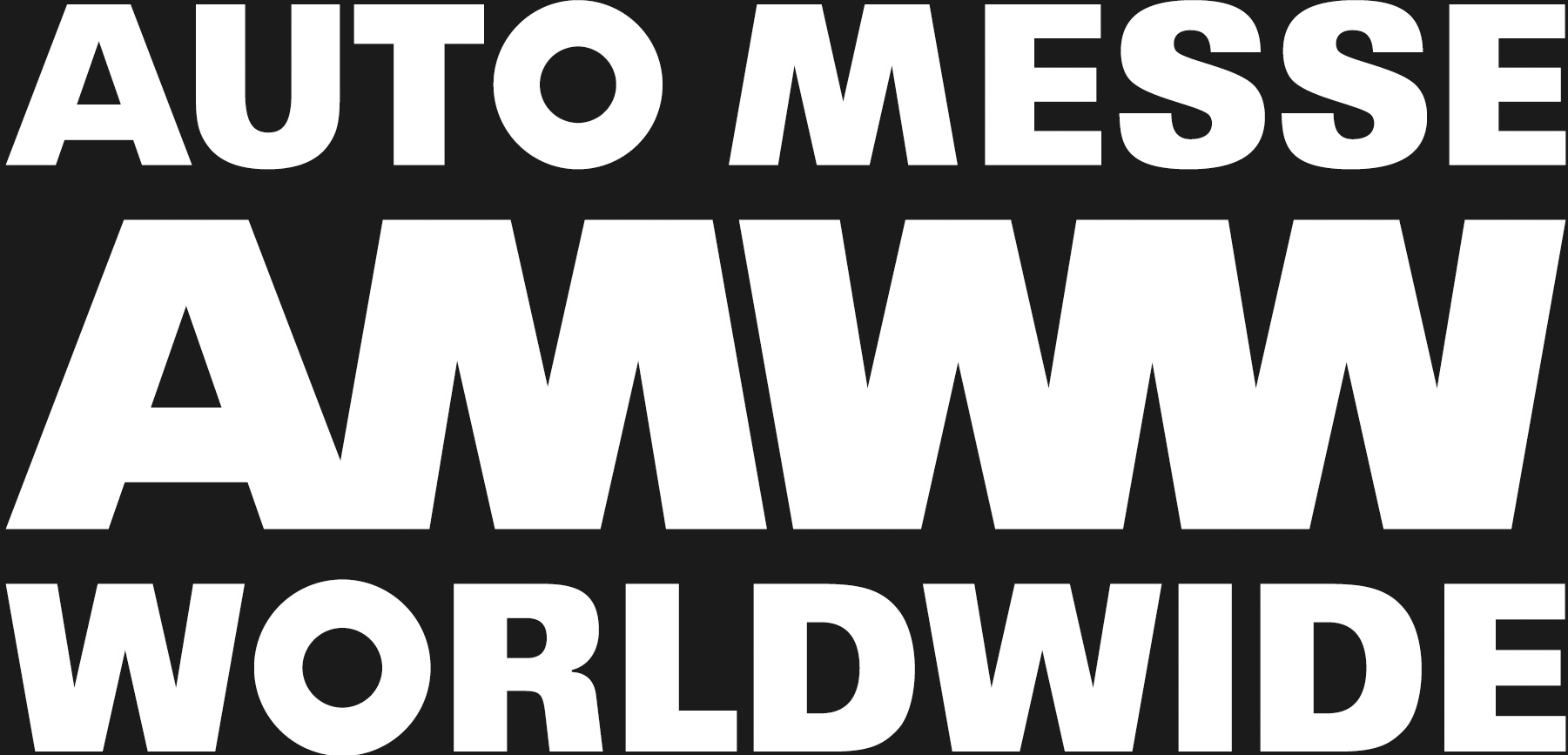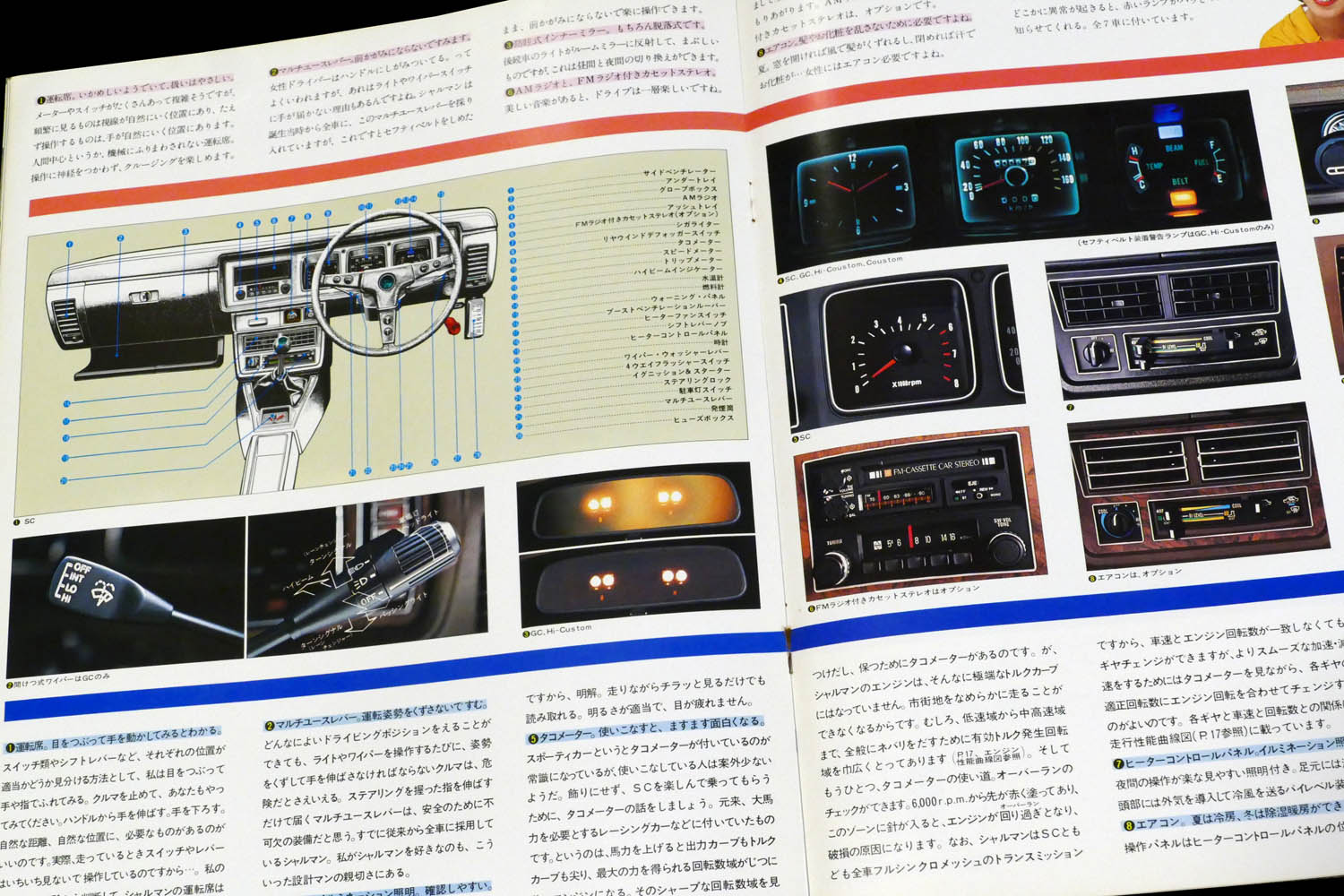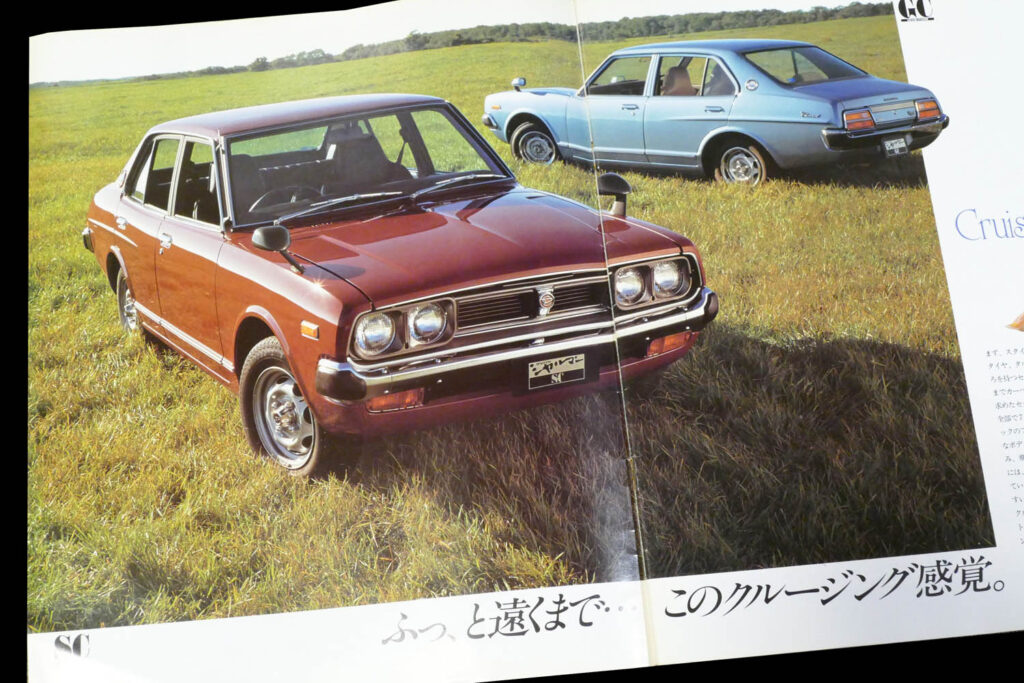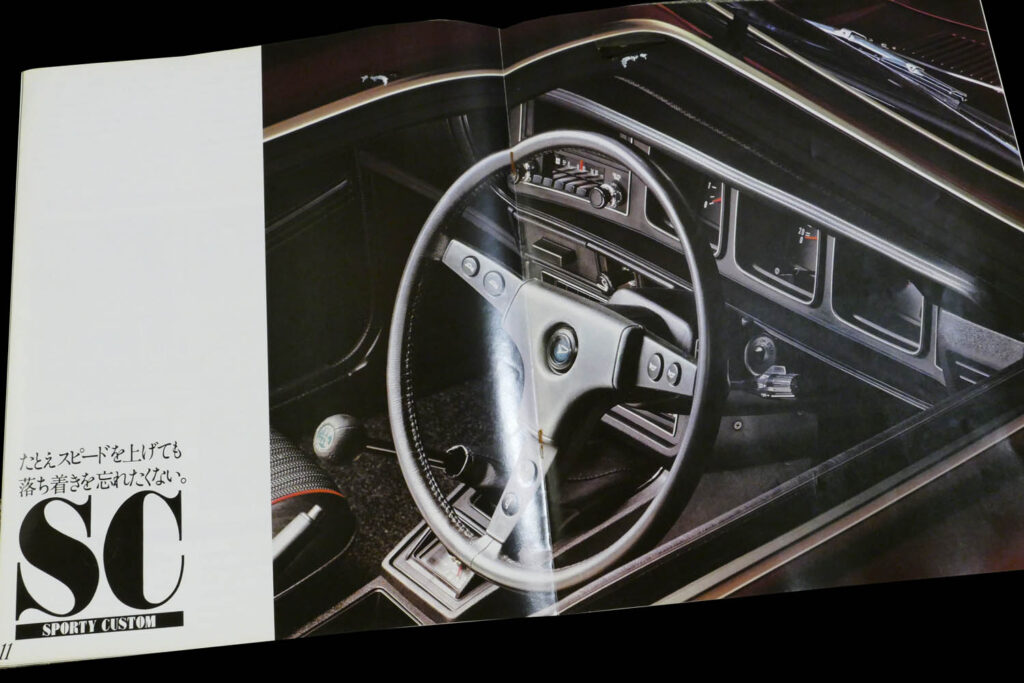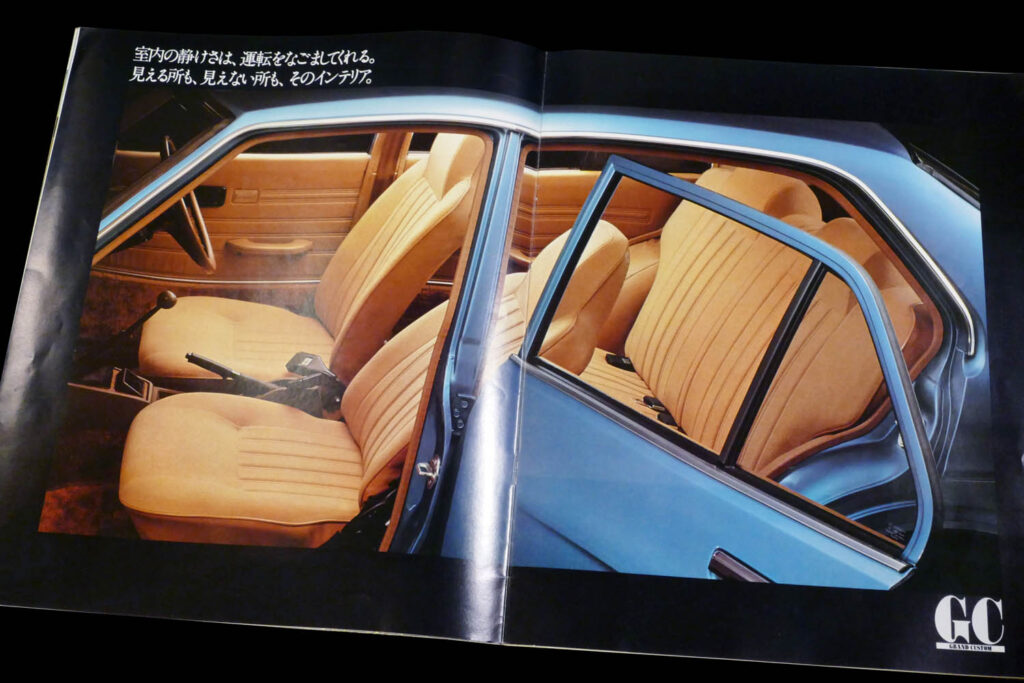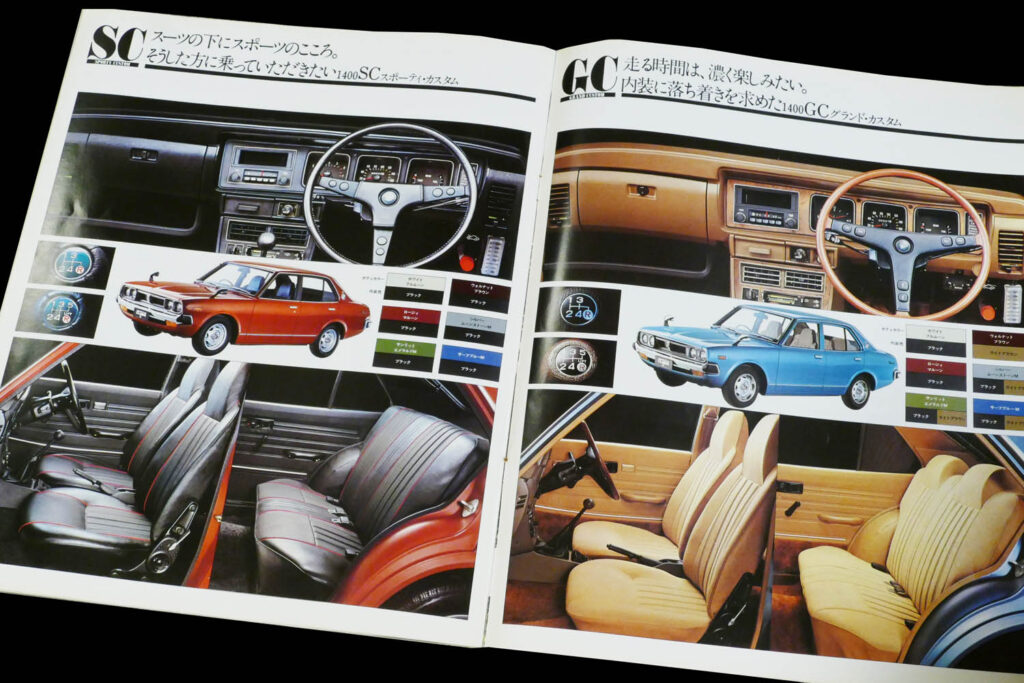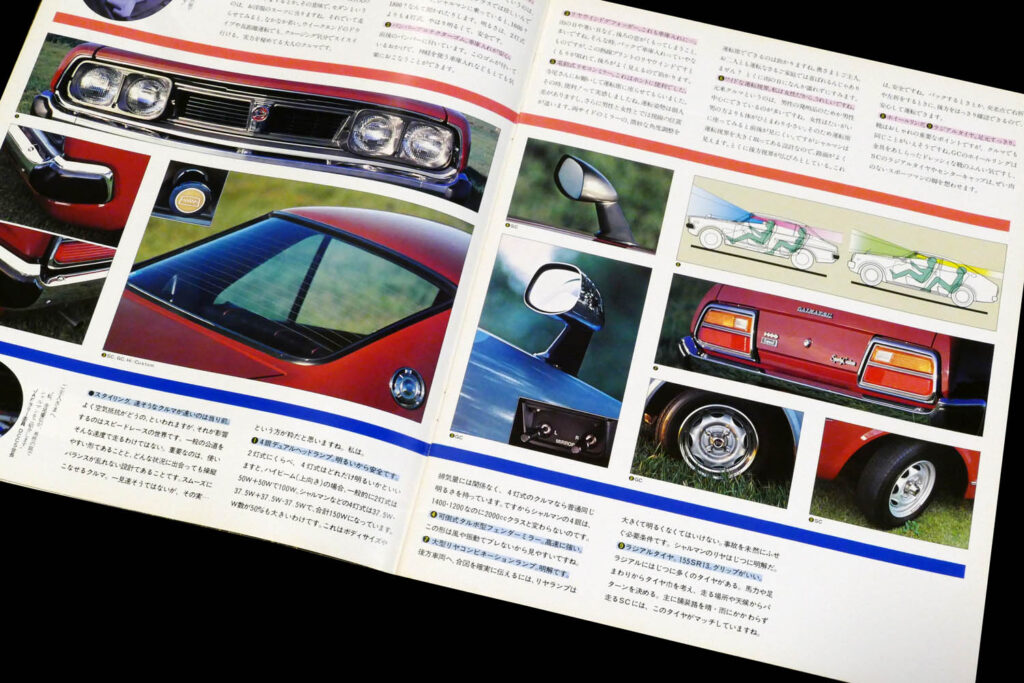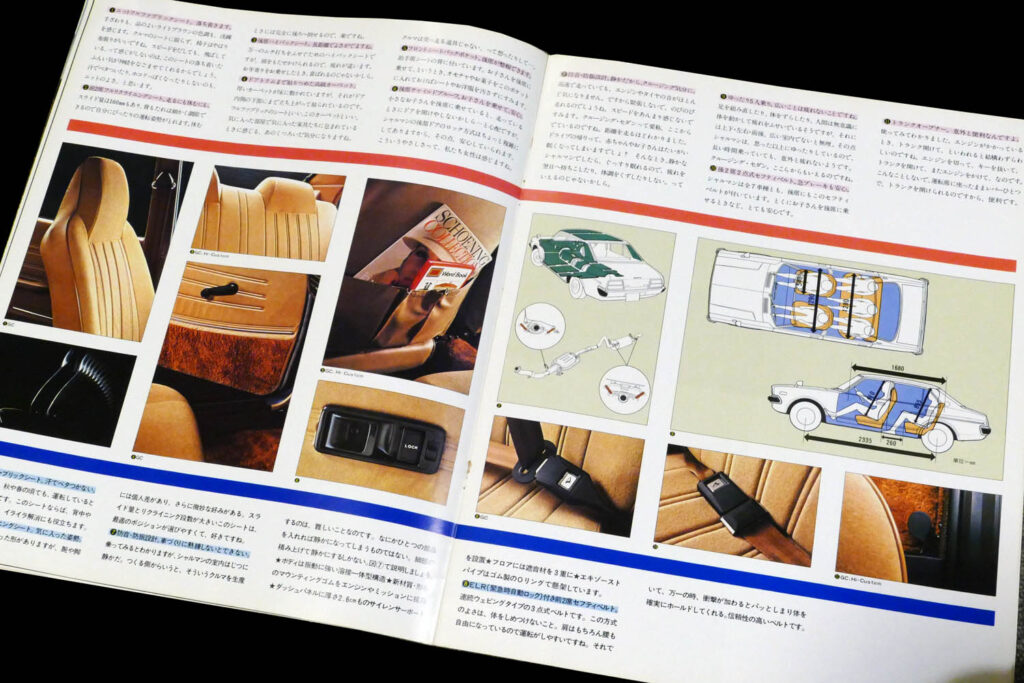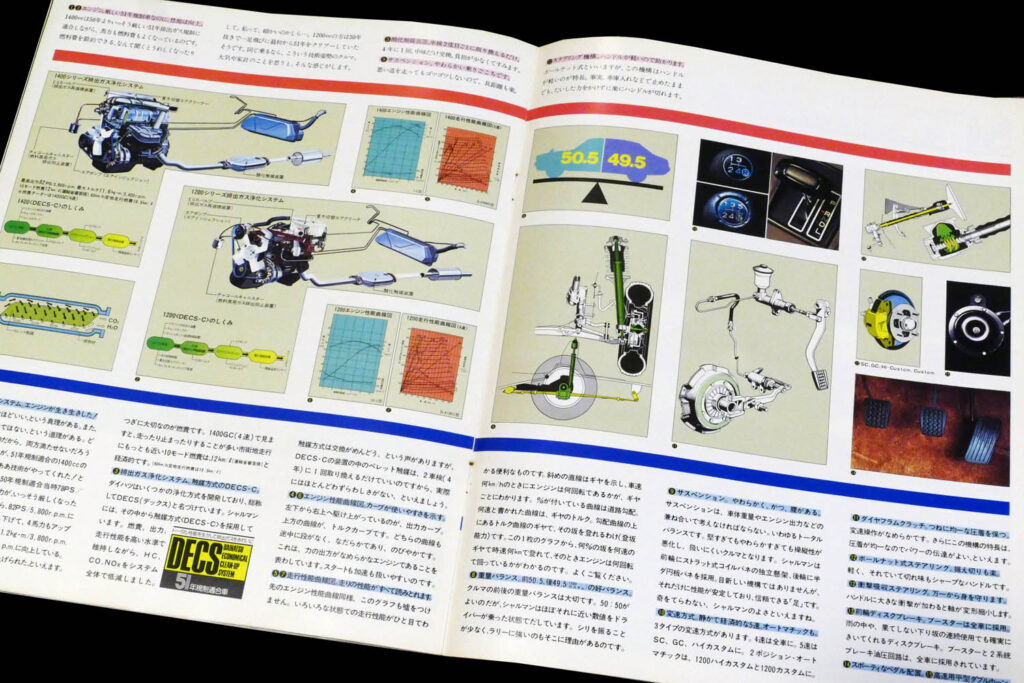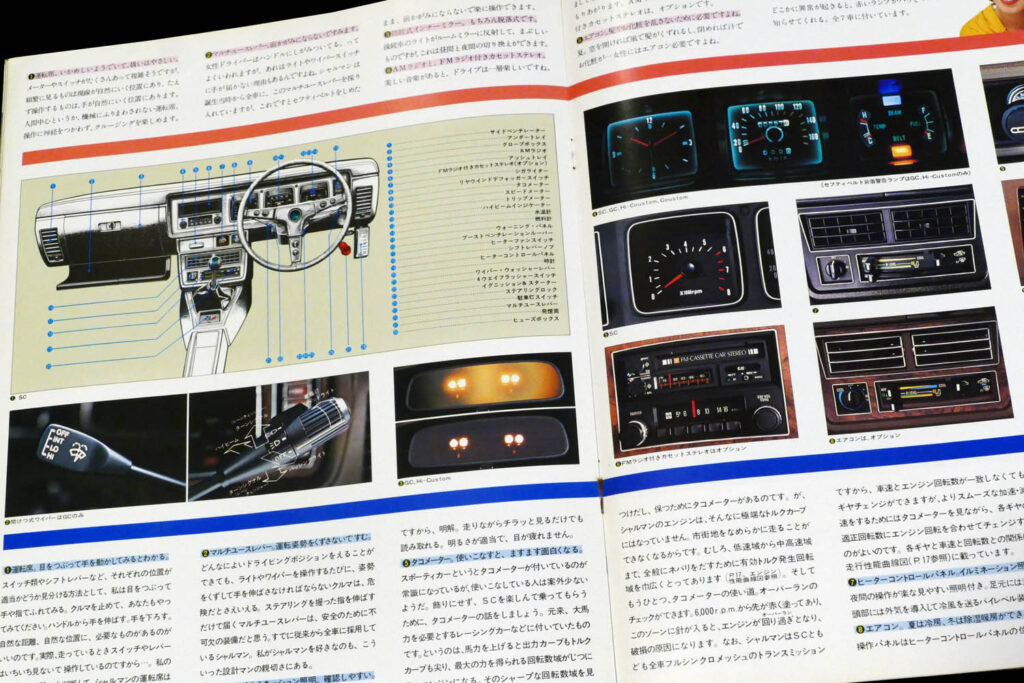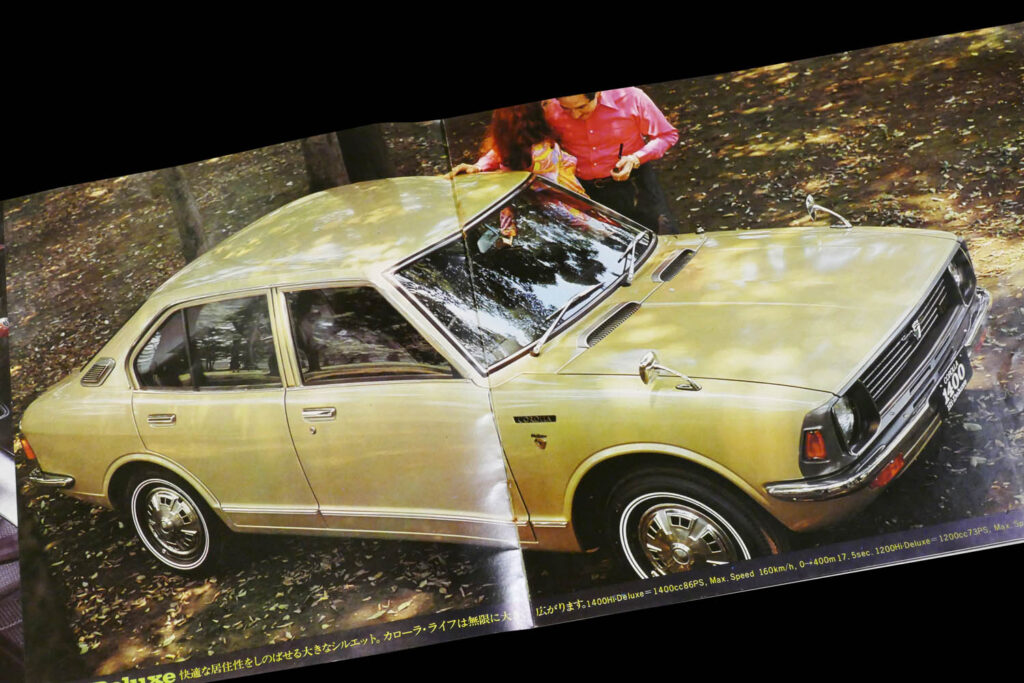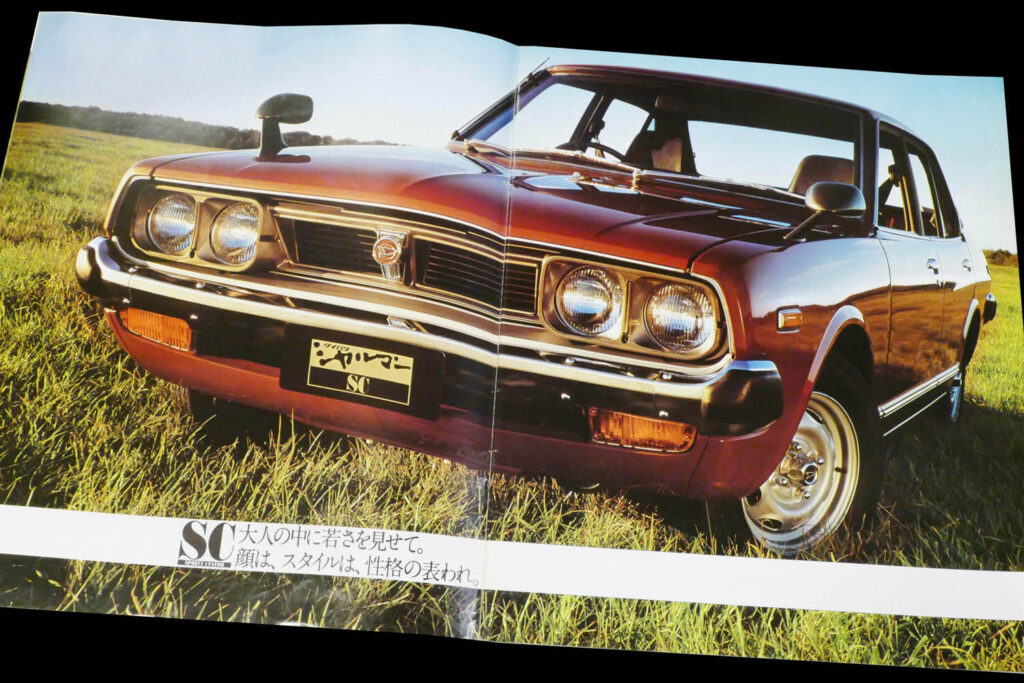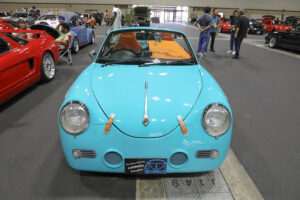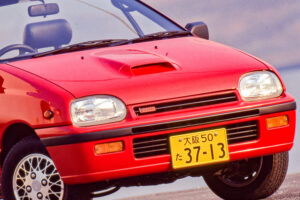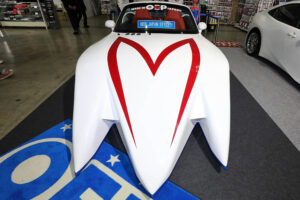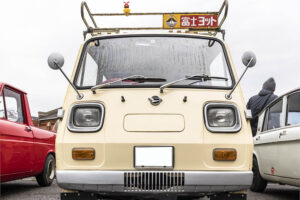Advanced equipment top-up
Speaking of equipment, the interior introduction page also conveys the atmosphere typical of the period. Equipment that was commonplace in later passenger cars, such as interlinked wipers, a multi-use lever that integrated functions such as indicator (lane changer), lights, passing and high-beam into a single lever, and anti-glare inner mirrors, are all introduced with photographs, as they were still at the beginning of their appearance.
Also nostalgic was the cassette stereo with FM radio, but even more nostalgic was the AM radio, which was preset by pressing a button for the station to be broadcast (the button could be pressed after causing it to be pressed). The instrument panel was designed with a row of square meters, and depending on the grade, there was a speedometer and an analog clock of the same size, which was also typical of the instrument panels of the 1970s.
There are also knitted fabric seats, two fully reclining front seats, rear high-back seats, luxury carpets up to the door trims, a boot opener, and other tear-jerking (!) features. The fact that the Charmant is equipped with and introduces many features that make it appealing as a high-end car is also a testament to the car’s launch.
The front-rear weight distribution was a whopping 50.5:49.5
Of course, the mechanism was also well introduced at the end of the book. In the section on the 1400cc and 1200cc engines that complied with the 1976 emission regulations, graphs showing the performance curves that were always included at the time, and, if it is rude to say so, a discussion of the front-rear weight balance of a whopping 50.5:49.5. The suspension, with strut-type coil springs on the front wheels and half-disk springs on the rear wheels, was described as “soft to the touch.”



